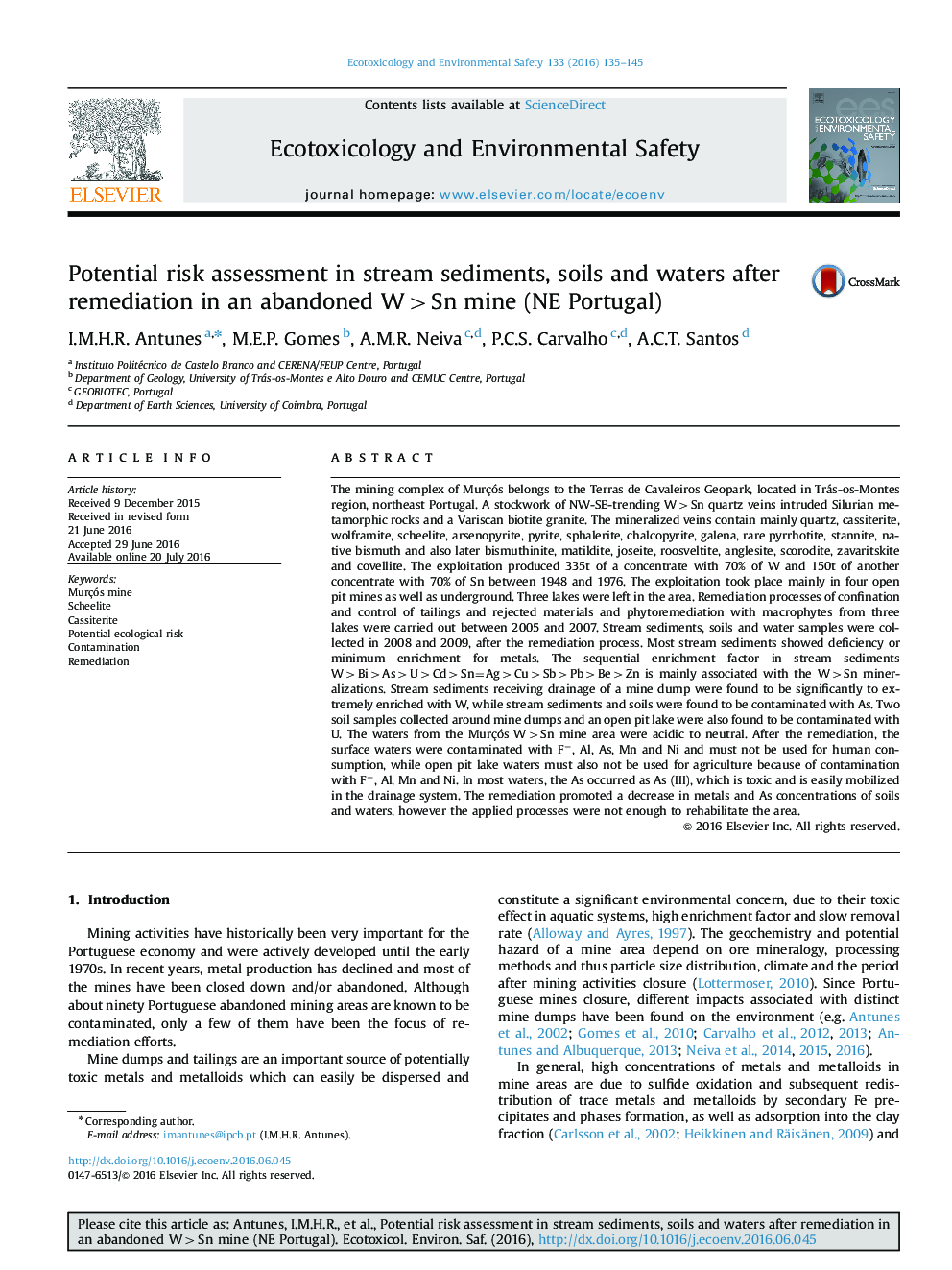| Article ID | Journal | Published Year | Pages | File Type |
|---|---|---|---|---|
| 4419038 | Ecotoxicology and Environmental Safety | 2016 | 11 Pages |
•Most stream sediments and soils are contaminated in As and U.•The surface and open pit lake waters are contaminated in metals and metalloid As.•The As of waters is As (III), toxic and promoting the dispersion over the area.•There is a decrease in soils and waters metals concentration with the remediation.•The remediation processes were not enough to rehabilitate the abandoned mine area.
The mining complex of Murçós belongs to the Terras de Cavaleiros Geopark, located in Trás-os-Montes region, northeast Portugal. A stockwork of NW-SE-trending W>Sn quartz veins intruded Silurian metamorphic rocks and a Variscan biotite granite. The mineralized veins contain mainly quartz, cassiterite, wolframite, scheelite, arsenopyrite, pyrite, sphalerite, chalcopyrite, galena, rare pyrrhotite, stannite, native bismuth and also later bismuthinite, matildite, joseite, roosveltite, anglesite, scorodite, zavaritskite and covellite. The exploitation produced 335t of a concentrate with 70% of W and 150t of another concentrate with 70% of Sn between 1948 and 1976. The exploitation took place mainly in four open pit mines as well as underground. Three lakes were left in the area. Remediation processes of confination and control of tailings and rejected materials and phytoremediation with macrophytes from three lakes were carried out between 2005 and 2007. Stream sediments, soils and water samples were collected in 2008 and 2009, after the remediation process. Most stream sediments showed deficiency or minimum enrichment for metals. The sequential enrichment factor in stream sediments W>Bi>As>U>Cd>Sn=Ag>Cu>Sb>Pb>Be>Zn is mainly associated with the W>Sn mineralizations. Stream sediments receiving drainage of a mine dump were found to be significantly to extremely enriched with W, while stream sediments and soils were found to be contaminated with As. Two soil samples collected around mine dumps and an open pit lake were also found to be contaminated with U. The waters from the Murçós W>Sn mine area were acidic to neutral. After the remediation, the surface waters were contaminated with F−, Al, As, Mn and Ni and must not be used for human consumption, while open pit lake waters must also not be used for agriculture because of contamination with F−, Al, Mn and Ni. In most waters, the As occurred as As (III), which is toxic and is easily mobilized in the drainage system. The remediation promoted a decrease in metals and As concentrations of soils and waters, however the applied processes were not enough to rehabilitate the area.
